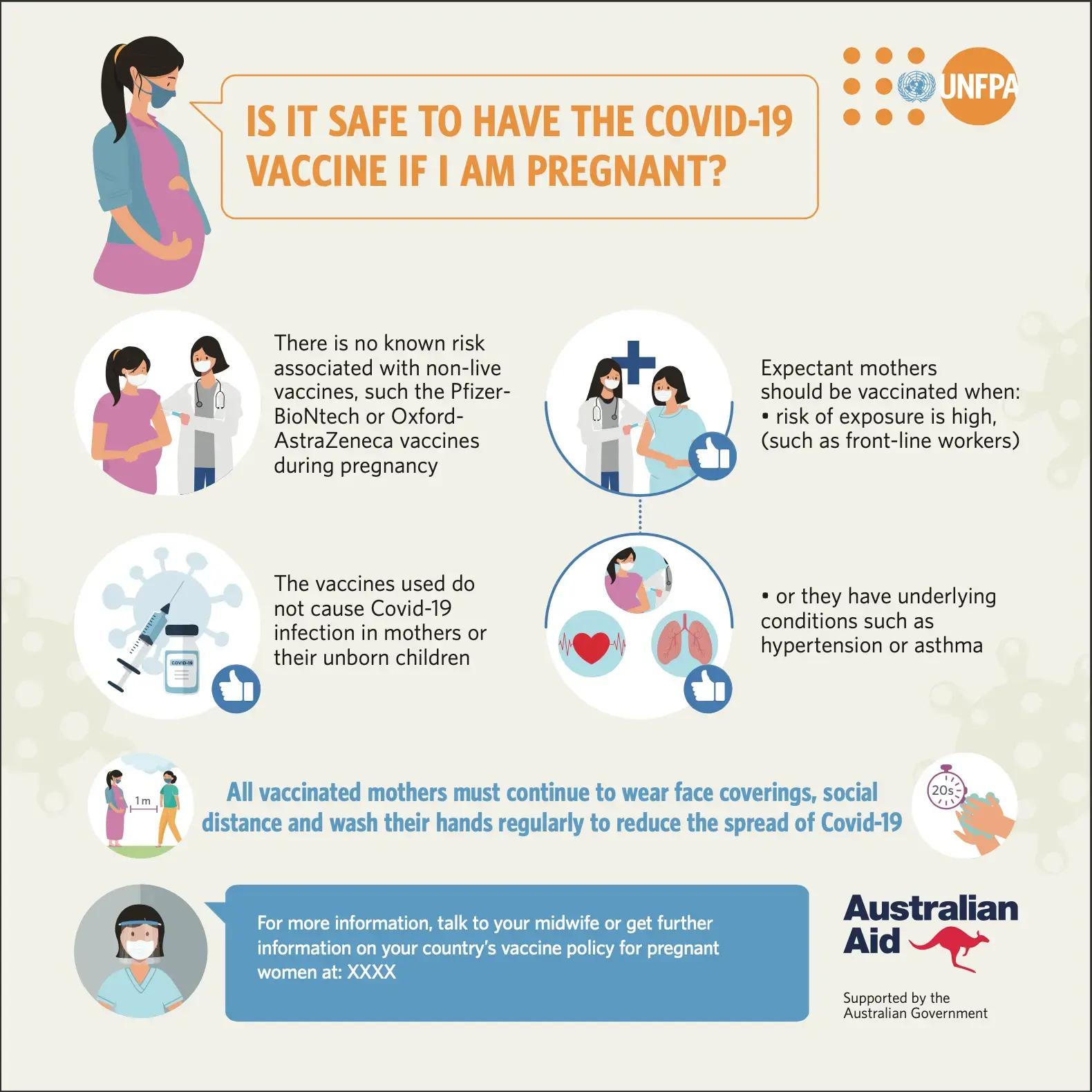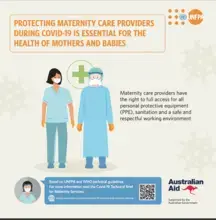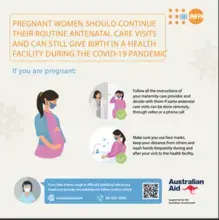Vientiane, 27 June 2018 – The Lao Statistics Bureau and the Ministry of Planning and Investment, in collaboration with the Ministry of Health and the Ministry of Education and Sports, and with technical support from UNICEF and UNFPA, launched today the Lao Social Indicator Survey (LSIS-II). This is the largest effort to date to measure the country’s progress on social development.
The survey demonstrates that important progress has been made in several areas of the wellbeing of women and children in Lao PDR such as child mortality, stunting, skilled birth attendance, water and sanitation coverage, primary education attendance, and to some extent in reducing violence against children. However, disparities persist between households from different geographical regions, rural and urban areas, households with different wealth and education level of mothers; and between ethnic groups.
LSIS-II is a nationwide household survey, using the Multiple Indicator Cluster Survey 6 (MICS6) platform which aims at generating national and provincial level data disaggregated by age, residence, sex, wealth quintile and ethnic groups. It has been carried out with collaborative funding from the Government of Lao PDR and a broad number of international partners, including UNICEF, the European Union, UNFPA, UNDP, WFP, WHO, USAID (that also provided technical support), the Swiss Agency for Development and Cooperation (SDC), Lux Development and the Japan International Cooperation Agency.
“The survey findings provide quality baseline data for monitoring and informing the 8th National Socio-Economic Development Plan (NSEDP). They will be extremely useful for the upcoming Mid Term Review, and to support the monitoring of the Sustainable Development Goals (SDGs) and the Voluntary National Review. Thanks to LSIS, we have produced a range of population and social indicators that are statistically sound and can help advocate for policy making, programme formulation and monitoring,” stated Samaychanh Boupha, Vice Minister, Head of the Lao Statistics Bureau.
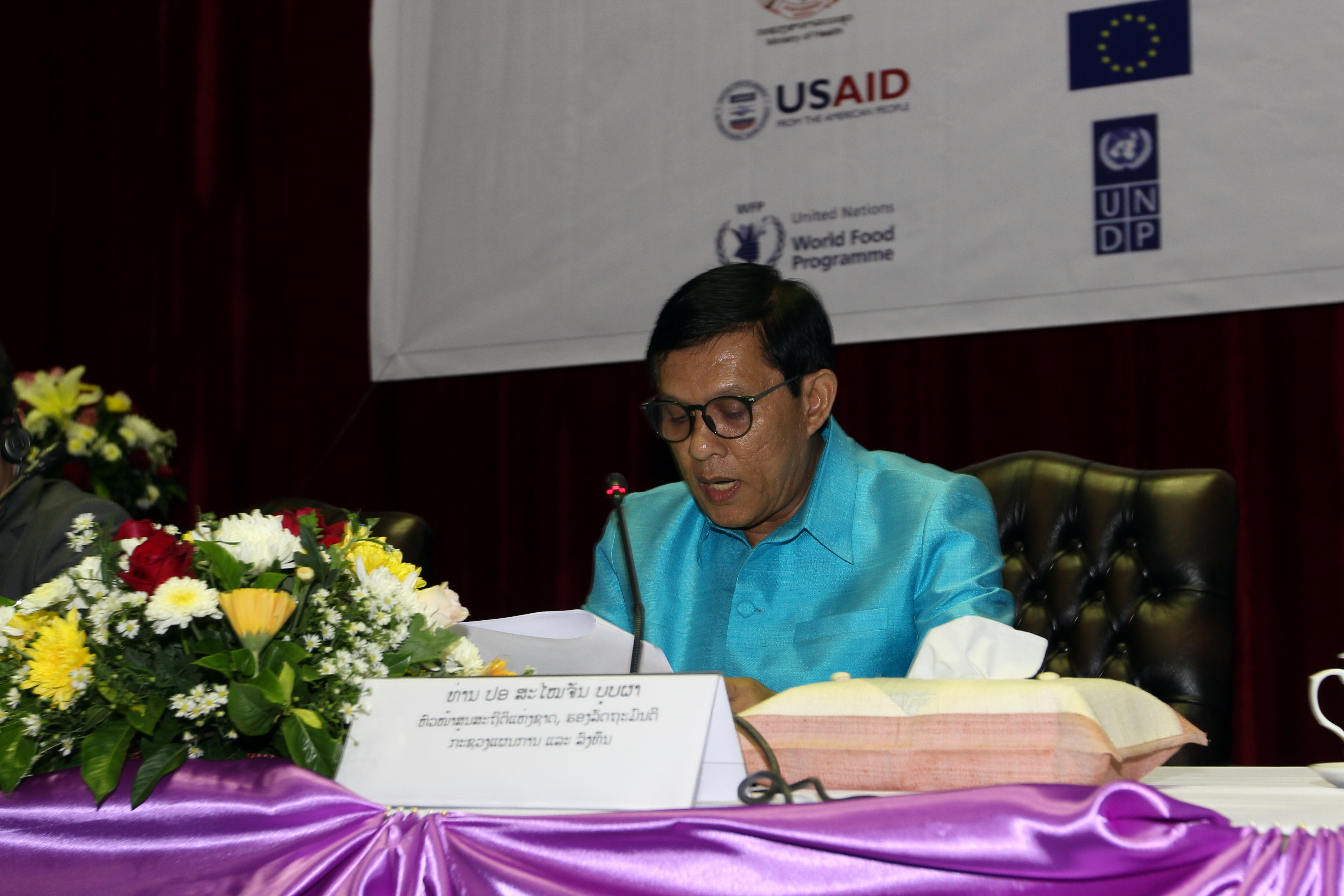
The complete results of the 2017-2018 LSIS-II presented today indicate that important progress has been made in reducing under five mortality, which currently stands at 46 deaths per 1,000 live births. However, more efforts are required to improve vaccination coverage for all the vaccines, which is still below the target of 90 per cent. Full immunization coverage, though, has increased from 40 per cent in 2011 to 48 per cent in LSIS-II.
Stunting (low height for age) has decreased from 44 per cent in LSIS-I to 35.6 per cent in 2015 (Lao Child Anthropometric Assessment Survey) and to 33 per cent in 2017. Despite this positive downward trend, there remain significant disparities across the 18 provinces. Exclusive breastfeeding during the first six months increased from 40.1 per cent in 2011 to 44.9 per cent in 2017.
There has been a 27 per cent increase in deliveries assisted by a skilled birth attendant for all women aged 15-49 between 2011-2017 (from 37.5 per cent to 64.4 per cent), although there are still important differences between urban (89.7 per cent) and rural areas without road (34.1 per cent).
It is the first time that a national survey has included and provided important data on abortion among women of the reproductive age (15-49 years of age). The result shows that, on average, 6.1 per cent of women have experienced at least one induced abortion in their lifetime, with a pronounced difference between provinces.
In terms of education, despite progress over the last years, the overall status of Early Childhood Education (ECE) remains weak. Two-thirds (67.9 per cent) of the children under five years of age still do not have access to early childhood education. The completion of the full cycle of compulsory education (primary and lower-secondary) for all children remains a challenge. While the adjusted primary net attendance ratio stands at 89.6 per cent, there is a low adjusted net attendance ratio for lower-secondary, which stands merely at 60.5 per cent.
The overall birth registration rate of children under five currently stands at 73 per cent, two percentage points less than in LSIS-I (75 per cent). The percentage of women aged 20 to 49 years married before the age of 18 dropped from 37 per cent in 2011 to 32.7 per cent in 2017.
Good progress has been made in water supply coverage. The percentage of people using improved sources of drinking water reached to 83.9 per cent. However, quality of water remains an issue. 86.3 per cent of the samples tested at household level were found positive for E-Coli (proxy indicator for faecal contamination which was tested for the first time in LSIS-II). Access to improved sanitation facilities reached 73.8 per cent. However, coverage varies significantly from rural to urban settings.
“The data released today is of critical importance in enabling outreach to the most remote and poor, as well as the country’s broad range of ethnic groups. LSIS-II shows that overall progress has been made in critical areas including child survival, nutrition and education, just to mention a few. Unfortunately, gains are uneven. Children in hard-to-reach areas, from poor backgrounds and those who belong to ethnic groups are lagging behind. With this evidence in hand, we will work closely with the Government and development partners to ensure that every child survives and thrives through better targeting of interventions,” said Octavian Bivol, UNICEF Representative, Lao PDR.
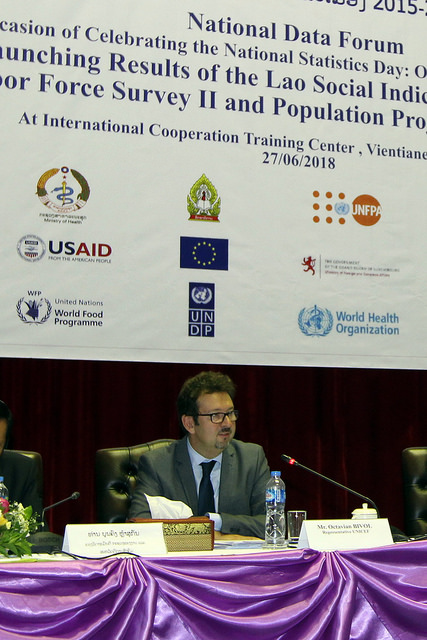
“In order to achieve universal health coverage and the Sustainable Development Goals, particularly SDG 3, 4 and 5, we must put young people and adolescent girls at the forefront of the development agenda in Lao PDR. However, adolescent girls are barely visible in the list of development indicators. The LSIS data collection and analysis provides all stakeholders and partners involved in the implementation of effective interventions with crucial and accurate evidence. This is vital to maintaining an in-depth understanding of the circumstances and challenges that adolescent girls like Noi are currently enduring” said Ms. Frederika Meijer, UNFPA Representative, Lao PDR.

175 field workers from central and provincial offices of the Lao Statistics Bureau, MoH and MoES were engaged in the data collection from July to November 2017, and 23,400 households, 3,400 more than in LSIS-I, constituted the sample.
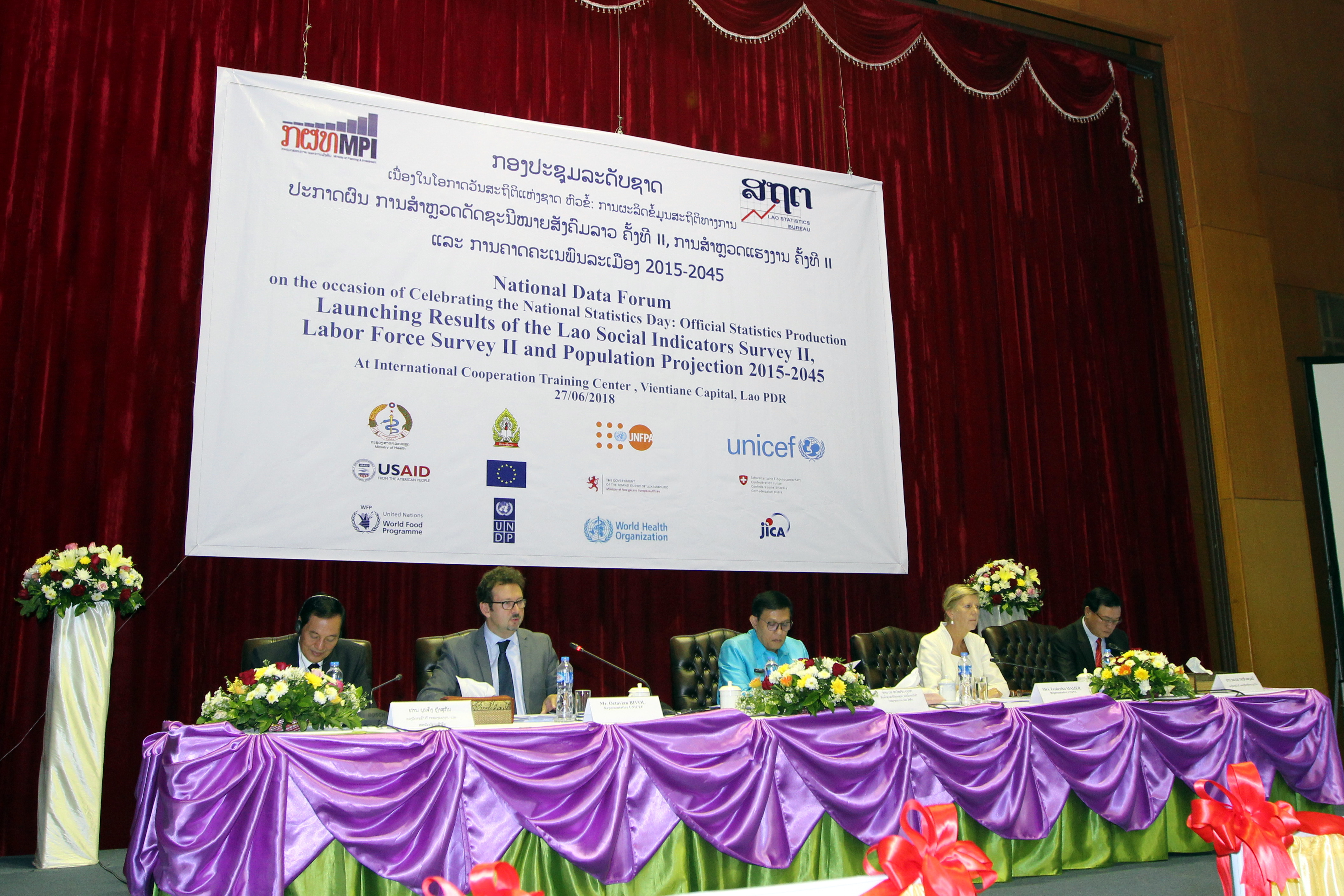
For more information, please contact:
Lao Statistics Bureau
Vilaysook Sisoulath, DDG, Social Statistics Department, LSB
Telephone: +856 21 214740
Mobile: +856 20 55795043
Email: vilaysooks@gmail.com
Maria Fernandez Ruiz de Larrinaga, Chief of Communication, UNICEF Lao PDR
Telephone: +856 21 315 200. Ext. 119
Mobile: +856 20 5551 9681
Email: mfernandez@unicef.org


